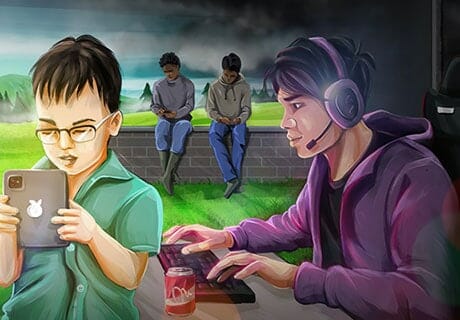Screen Time Rules for Kids: Age-by-Age Guide for Parents
In today’s digital age, screens have become an inevitable part of our lives and those of our children. From televisions 📺 to smartphones 📱, tablets 📲 to gaming consoles 🎮, the digital world is right at our children’s fingertips. But as a parent, you may often find yourself pondering, “How much screen time 🕰️ is too much for my child?” This is a vital question, as excessive screen time can adversely influence children’s physical health, social skills, and cognitive development.
Understanding the balance can be tricky, especially when the ‘right’ amount of screen time can change as your child grows. That’s why we’ve created this comprehensive age-by-age breakdown. In this guide, we’ll delve into the recommended screen time for each age group, from infancy to young adulthood, providing insights that can help you navigate your child’s digital journey. Whether your little one is captivated by cartoons or your teenager can’t put down their smartphone, this guide will help you establish healthy screen habits for your child. Let’s explore together!
Table of Contents
Screen Time Rules for Kids:
👶Kids 0-1 Years Old (Infants)
At this age, it is generally recommended to avoid screen time, other than video chatting with remote family. Babies need direct interactions with caregivers for their development. You can sing, read, and play games with them instead.
🧒Kids 1-2 Years Old (Toddlers)
Screen time for toddlers should be kept very minimal. It is advised to limiting screen time to an hour per day of high-quality programming, supervised by an adult. This might include educational programming or apps that encourage creative play.
🧒Kids 2-3 Years Old (Toddlers)
At this age, children can benefit from a limited amount of high-quality educational screen time. Continue to limit total screen time to an hour a day, and ensure you’re co-viewing and interacting with your child during this time to help them understand what they’re seeing.
👦Kids 3-5 Years Old (Preschoolers)
The recommendation is still to limit screen time to one hour per day of high-quality programs. Parents should co-view media with children to help them understand what they are seeing and apply it to the world around them.
🧑Kids 6-8 Years Old (Middle Childhood)
At this age, the focus should be more on the quality of the content and less on the screen time. You can gradually increase screen time to 1.5 hours per day, but make sure that it is not getting in the way of sleep, physical activities, or other behaviors essential for health.
🧑Kids 9-11 Years Old (Middle Childhood)
At this age, limit screen time to 2 hours per day, focusing on educational content and some entertainment. Encourage other activities and hobbies that don’t involve screens. Encourage them to be critical viewers of the media they consume.
👨Kids 12-14 Years Old (Young Teens)
The screen time should be no more than 2-3 hours a day, excluding time for homework or school. Encourage physical activities, reading, and other non-screen activities. Continue to monitor the media they consume and discuss it with them.
👨🦱Kids 15-17 Years Old (Teenagers)
This age group should also limit recreational screen time to 2-3 hours a day. Encourage them to take regular breaks to avoid eye strain. Make sure that screen time does not interfere with adequate sleep, physical activity, and other behaviors essential to health.
🧔Kids 18-21 Years Old (Young Adult)
As young adults, they should start to self-regulate their screen time, ideally keeping it under 3 hours a day for recreational use. Encourage them to balance online and offline social activities and to maintain physical activities.
For all age groups, it’s important to create tech-free zones and times, such as during meals or a certain period before bedtime, to encourage face-to-face interaction and healthy sleep habits.
FAQ: Kids and Screen Time
Q: Why is managing screen time important for kids?
A: Managing screen time is crucial because excessive or unmonitored use can impact a child’s physical health, cognitive development, and social skills.
Q: Are there positive effects of screen time for kids?
A: Yes, when used purposefully, screens can be educational, can foster creativity, and can provide means for social interaction, especially with distant family or friends.
Q: How does excessive screen time affect a child’s sleep?
A: Overexposure to screens, especially before bedtime, can interfere with the body’s production of melatonin, leading to sleep disturbances.
Q: Can screen time affect a child’s eyesight?
A: Extended screen time has been associated with the onset of myopia in children. Additionally, prolonged use of digital screens can lead to conditions such as dry eyes, digital eye fatigue, and improper head and neck positions, potentially resulting in discomfort.
Q: How can parents ensure a balance between screen time and physical activity?
A: Set specific screen time limits and encourage breaks that involve physical activities, outdoor play, or family walks.
Also, look into Screen Time Management such as our “Points and Reward System“.
Q: How can I make screen time more interactive for my child?
A: Engage in co-viewing, discuss the content, ask open-ended questions, or use educational apps that require active participation.
Q: Are all types of screen time equal?
A: No, passive screen time (e.g., mindlessly watching shows) and active screen time (e.g., educational apps, interactive games) have different impacts. The latter can be more beneficial.
Q: How can screen time affect a child’s social skills?
A: Excessive solo screen time can reduce face-to-face interactions, which are crucial for developing communication and social skills.
Q: Should I be concerned about my child’s posture during screen time?
A: Yes, prolonged screen use can lead to poor posture, which can result in neck, back, and shoulder strain. It’s essential to ensure a comfortable and ergonomic setup.
Q: How do “tech-free zones” benefit families?
A: Tech-free zones, like during meals, promote face-to-face interaction, fostering better family connections and communication.
Q: Are there tools or apps to help manage my child’s screen time?
A: Yes, many devices come with built-in parental controls, and there are dedicated apps to set screen time limits and monitor usage.
Q: Can excessive screen time lead to behavioral issues?
A: Overuse can sometimes be linked to increased irritability, reduced attention spans, and other behavioral challenges.
Q: Should I be concerned about the content my child is exposed to during screen time?
A: Absolutely. It’s essential to monitor and ensure the content is age-appropriate, educational, and aligns with your family’s values.
Q: Is screen time before bed particularly harmful?
A: Yes, the blue light emitted from screens can interfere with sleep patterns. It’s advised to avoid screens at least an hour before bedtime.
Q: How can I make screen time a more social experience for my child?
A: Encourage group activities like family movie nights, multiplayer games, or interactive apps that can be shared with friends.
Q: Should I be worried if my child prefers screen time over other activities?
A: A preference for screens over all other activities might indicate an imbalance. It’s essential to encourage diverse interests and hobbies.
Q: Are there benefits to involving my child in setting screen time rules?
A: Yes, involving them can make them feel empowered and more likely to adhere to the rules as they understand the reasoning behind them.
Q: Is it okay for my child to use screens if they’re only consuming educational content?
A: While educational content is beneficial, it’s still essential to monitor the amount of time spent and ensure a balance with other activities.
Author Tools:
- Grammarly (Spelling and Grammar)
- ChatGPT (Content Enhancements & Research)
- GSpeech (Audio by AI)
- Other Tools (AI)...
Artists:
References:
-
1. Media and Children Overview
merican Academy of Pediatrics (AAP)
https://www.aap.org/en/patient-care/medi...
Children today spend roughly seven hours daily on various entertainment devices. Advertising targeting children has expanded beyond TV, with influencers, in-game hidden ads, data collection, and targeted online ads playing roles. Consequently, parents frequently seek advice from pediatricians. This highlights the need for more research on media's effects on child health and resources for guidance. The Family Media Plan is one such tool recommended by the AAP, helping families create and adapt a tailored approach to media consumption considering each child's and the family's needs.
-
2. Physical activity
World Health Organization (WHO)
https://www.who.int/news-room/fact-sheet...
Physical activity, defined by the WHO as any bodily movement requiring energy expenditure, offers substantial health advantages, benefiting the heart, body, and mind. Engaging in physical activity aids in combating noncommunicable diseases, alleviating symptoms of depression and anxiety, enhancing cognitive functions, promoting healthy development in youth, and improving overall well-being. However, a significant portion of the global population, including over 80% of adolescents, does not achieve recommended activity levels. Consequently, inactive individuals face a 20-30% higher risk of death. Popular activity forms encompass walking, cycling, sports, and recreational activities. WHO guidelines vary by age: for instance, young children should engage in daily physical play, while adults should aim for 150-300 minutes of moderate aerobic activity weekly. Regardless of age, sedentary behavior, especially excessive screen time, should be minimized.
-
3. Reviews for what your kids are into (before they get into it)
Common Sense Media
https://www.commonsensemedia.org/
Summary:
A source to review what your kids are wanting to get into.
-
4.
Children and Screens: Institute of Digital Media and Child Development
https://www.childrenandscreens.com/
-
5. Reduce Screen Time
National Institute of Health (NIH)
https://www.nhlbi.nih.gov/health/educati...
Health experts recommend limiting non-work or non-educational screen time, which includes TV, computers, and handheld devices, to two hours or fewer daily. This is because the time spent on screens can be utilized for more physical activities. Although setting media usage rules is challenging for many parents, research indicates that when such rules are established, children's daily media consumption drops by almost three hours. On average, children aged 8-18 engage with screens for 7.5 hours daily, with only 25 minutes spent reading books. Furthermore, many youngsters have access to various media devices in their bedrooms, which often increases their screen time. Tools and tips are available to help families minimize screen time and promote more active lifestyles.
-
6. THE VISION COUNCIL SHINES LIGHT ON PROTECTING SIGHT – AND HEALTH – IN A MULTI-SCREEN ERA
The Vision Council
https://thevisioncouncil.org/blog/vision...
While over 70% of adults acknowledge their children use screens for two or more hours daily, nearly 25% are unconcerned about its impact on their children's eyes. Among parents who noticed symptoms, children exhibited reduced attention span (15.2%), irritability (13.5%), poor behavior (13.3%), eye issues (9.1%), headaches (8.8%), and neck or shoulder pain (5%) after extended screen use. This highlights the growing issue of digital eye strain among children.
To alleviate digital eye strain, consider the following "eye-gonomic" strategies: take regular breaks from screens, maintain an arm's distance from computer monitors, adjust font sizes and screen settings for better visibility, and minimize overhead lighting to prevent screen glare.




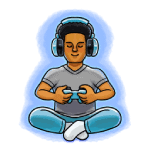



 Snacks
Snacks Water
Water Eye Sight
Eye Sight Hearing
Hearing














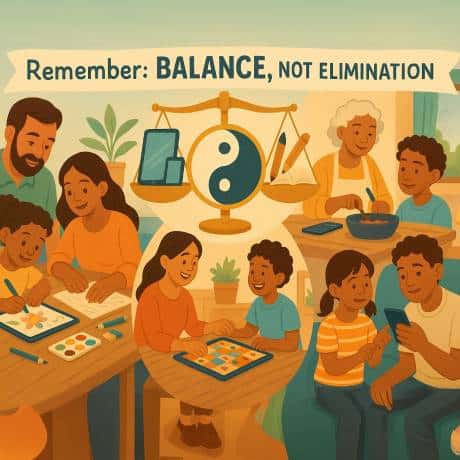

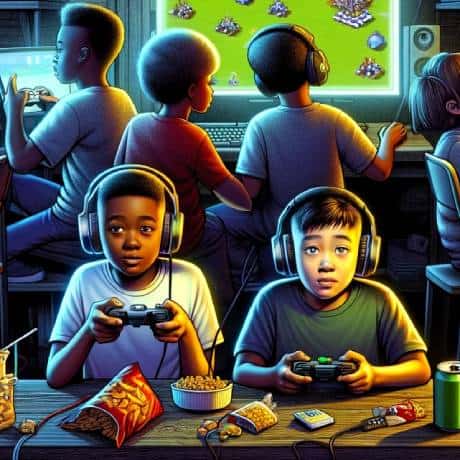





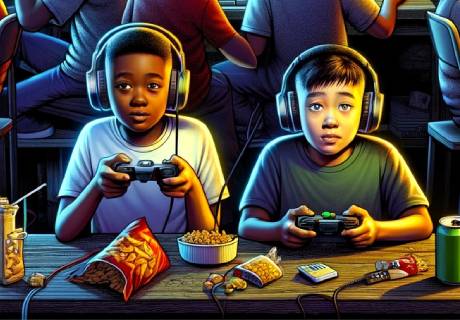
 Screen Time
Screen Time Play Sports
Play Sports


